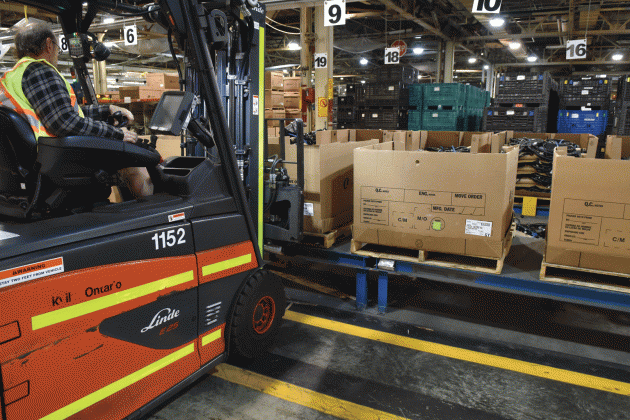
Ford drives out waste
By Matt Powell, Assistant Editor
Industry Sustainability Automotive Manufacturing environment Ford oakville assembly plant WasteFord of Canada’s Oakville Assembly plant is a busy place these days.
Not only did the automaker invest more than $700 million at the facility in 2013, it will soon manufacture the Ford Edge crossover for export in more than 100 countries, and 1,000 jobs will be added to do so.
Now it can add zero waste-to-landfill to the list of activities around the plant.
The automaker’s largest Canadian production facility, which produces the Ford Edge and Flex, and Lincoln MKX and MKT standing at close to 5.5 million square-feet across 487 acres, is the first of the company’s assembly plants in North America to achieve the environmental designation.
It’s quite an accomplishment. The plant employs more than 4,000 workers, after adding the 1,000 new jobs, and it handles as many as 10,000 parts daily. That’s a lot of people and suppliers to get onboard with such a green commitment.
“It’s been quite a journey,” says Greg Twomey, Oakville’s environmental and engineering manager. “We’ve had a real direction to reduce our waste to landfill over the last five years, and have done so in an incremental, step by step process to get to the point we’re at today.”
The zero waste-to-landfill goal has been achieved thanks to a commitment to a set of standards and processes that are part of the company’s environmental operating system, and employee buy-in.
In 2013, the plant recycled close to 2,000 tonnes of wood, cardboard, paper and plastic, saving more than 5,000 cubic metres of landfill space and more than 32 million litres of water.
That’s enough landfill space to fulfill the municipal waste disposal needs for a community of more than 5,500 people for a year. Wastewater treatment plant sludge is also reused, and sent to a power generation company where it’s converted into energy that’s cycled back in the community.
Oakville’s success is contributing to the automaker’s global waste to landfill target of 40% per vehicle produced from 2011 to 2016. It already achieved the 40% between 2007 to 2011.
Ford is also dabbling in greener materials, including a partnership with Heinz that’s working to produce auto parts from recycled tomato skins. It’s already using coconut-based composite materials and sources soy foam seat cushions and headrests.
Now 21 Ford facilities around the globe maintain zero waste-to-landfill status. By Ford’s strict definition, this means not sending any operational waste to a landfill.
Sustainable packaging
The Essex Engine Plant received landfill-free status in 2012 followed by the Windsor Engine Plant last year.
“When it comes to waste streams, you want to reduce what comes into the plant and the biggest factor is your relationship with your supplier base,” says Twomey.
To avoid piles of cardboard, the plant uses more sustainable packaging such as collapsible, reusable plastic totes. For more complex parts, Ford engineers work with suppliers to develop new, waste-free packaging.
“When talking about the Three Rs – reduce, re-use, recycle – we try to reduce first. Sometimes if we need unique sizes, we need to design unique containers to make it work,” says Twomey.
Suppliers are also notified of any changes to Ford’s sustainability standards.
“The standards we put in place are corporate wide processes and procedures that allow people to learn from what we do,” says Twomey. “There’s always challenges when it comes to the supply chain, so we have to be nimble in making adjustments to keep short term disruptions to a minimum. That’s an ongoing process.”
Employees undergo environmental training, and plant manager Will Cowell gives the current 3,000 plant workers the most credit. He says there’s also a high level of environmental awareness that generates useful feedback.
“They’re the people on the floor, the people that are getting their hands into the waste stream and the people we
really need to cooperate with,” he says.
As a corporate objective, zero waste-to-landfill drives Oakville Assembly’s commitment to continuous improvement, Cowell adds.
That’s a positive way to direct sustainable processes into action on the production floor.
This article appears in the October 2014 issue of PLANT.

